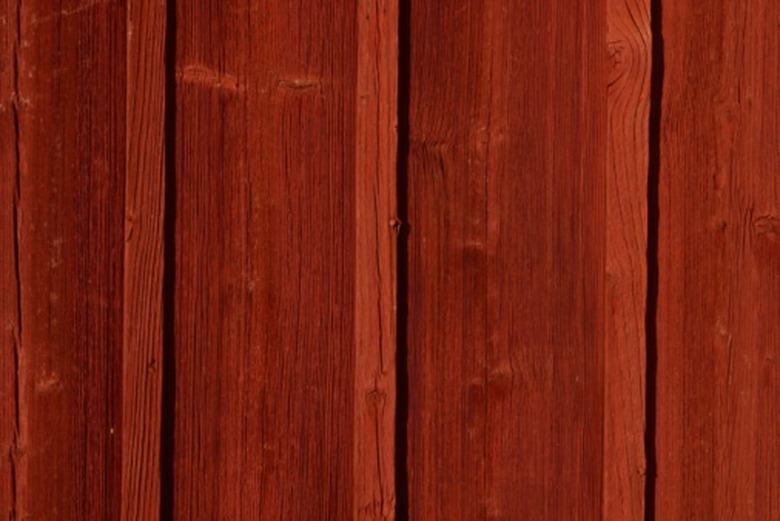How To Protect Cedar Wood
Things Needed
-
Painters tape
-
Painters tarp
-
Newspaper sheets, several
-
Polyurethane, 1 gallon
-
Paint tray
-
Foam paint brush
-
Roller
Cedar, oak, and pine, are fine woods often used for wall paneling, building crafts, chests, and shelves. Cedar wood, like other fine woods, can and should be coated with polyurethane for protection. Polyurethane will keep dirt, dust, and oil from getting onto the cedar which would dull and damage the color. If the cedar you want to protect is not new it will need to be scrubbed with hot soapy water and a cloth. Allow the wood to dry completely before applying the polyurethane to it. If the wood is not washed first the dirt and oils on it will become trapped under the polyurethane.
Step 1
Apply painters tape along the top and bottom edges of cedar walls to prevent polyurethane from getting on your ceiling or floor. Cover mirrors, etc., that are a part of your cedar furniture or craft using painters tape and several sheets of newspaper.
Step 2
Fill a paint tray with polyurethane, pouring it slowly to avoid creating air bubbles as it pours. Use a roller to cover the object. Roll the roller in a back and forth motion, either horizontally or vertically, but not both, or there will be roller edge lines in the poly finish. Cover all open large areas with the roller.
Step 3
Fill in any cracks, crevices, or corners with a small foam paint brush. Allow to dry for 1 hour.
Step 4
Sand the entire surface using either an electric hand-held sander, a sanding block, or a piece of fine grit sandpaper. Do this to eliminate all blemish spots caused from air bubbles created as the polyurethane was rolled onto the wood surface. Do not sand additional coats of poly after they are applied. The second coat of polyurethane adheres to the first coat, which has been sanded, smoothly. Dust the cedar off using a soft damp cloth, then dry the surface using a soft dry cloth.
Step 5
Apply a second coat of polyurethane in the same manner, with a roller and paint brush. Allow the polyurethane to dry completely, then apply several more coats until the thickness of the polyurethane is 1/8 inch. Do this if the surface will need to be washed often, or will be exposed to moisture, or leave the poly at two coats if the surface will never be touched, as in the case of a craft item which will be set up, undisturbed. Remove painters tape and newspaper when finished applying the poly.
Warning
Ventilate the area well.
